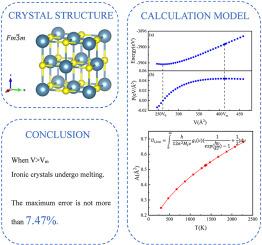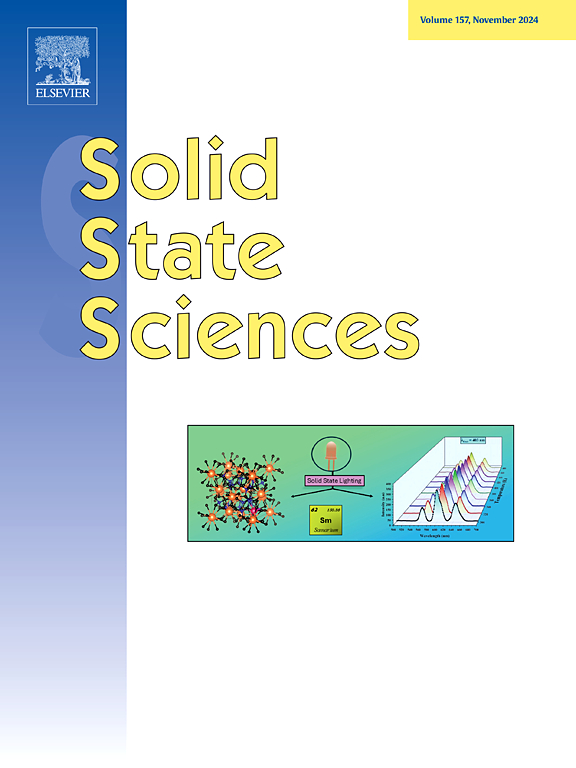原子均方位移法在计算 II-VI 化合物熔化温度方面的扩展
IF 3.4
3区 化学
Q2 CHEMISTRY, INORGANIC & NUCLEAR
引用次数: 0
摘要
了解固体如何熔化以及确定其熔化温度对于研究材料的性质具有重要意义。基于林德曼熔化准则的主要思想和密度泛函理论的第一性原理计算,我们提出了原子均方位移法来预测材料的熔化温度。本文扩大了该方法在计算熔化温度方面的应用范围。选取了 8 种Ⅱ-Ⅵ族化合物作为验证对象。结果表明,我们的方法在预测Ⅱ-Ⅵ化合物熔化温度方面具有很高的准确性。本文章由计算机程序翻译,如有差异,请以英文原文为准。

An extension of atomic mean square displacement method for calculating melting temperatures in II-VI compounds
Understanding how solids melt and determining their melting temperatures is of great significance for studying the properties of materials. Based on the main idea of Lindemann's melting criterion and the first-principles calculation of density functional theory, we proposed the atomic mean square displacement method to predict the melting temperature of the material. In this paper, the application range of this method for calculating melting temperature is extended. 8 kinds of Ⅱ-Ⅵ compounds were selected as verification objects. The results show the accuracy of our method in predicting the melting temperature of Ⅱ-Ⅵ compounds.
求助全文
通过发布文献求助,成功后即可免费获取论文全文。
去求助
来源期刊

Solid State Sciences
化学-无机化学与核化学
CiteScore
6.60
自引率
2.90%
发文量
214
审稿时长
27 days
期刊介绍:
Solid State Sciences is the journal for researchers from the broad solid state chemistry and physics community. It publishes key articles on all aspects of solid state synthesis, structure-property relationships, theory and functionalities, in relation with experiments.
Key topics for stand-alone papers and special issues:
-Novel ways of synthesis, inorganic functional materials, including porous and glassy materials, hybrid organic-inorganic compounds and nanomaterials
-Physical properties, emphasizing but not limited to the electrical, magnetical and optical features
-Materials related to information technology and energy and environmental sciences.
The journal publishes feature articles from experts in the field upon invitation.
Solid State Sciences - your gateway to energy-related materials.
 求助内容:
求助内容: 应助结果提醒方式:
应助结果提醒方式:


